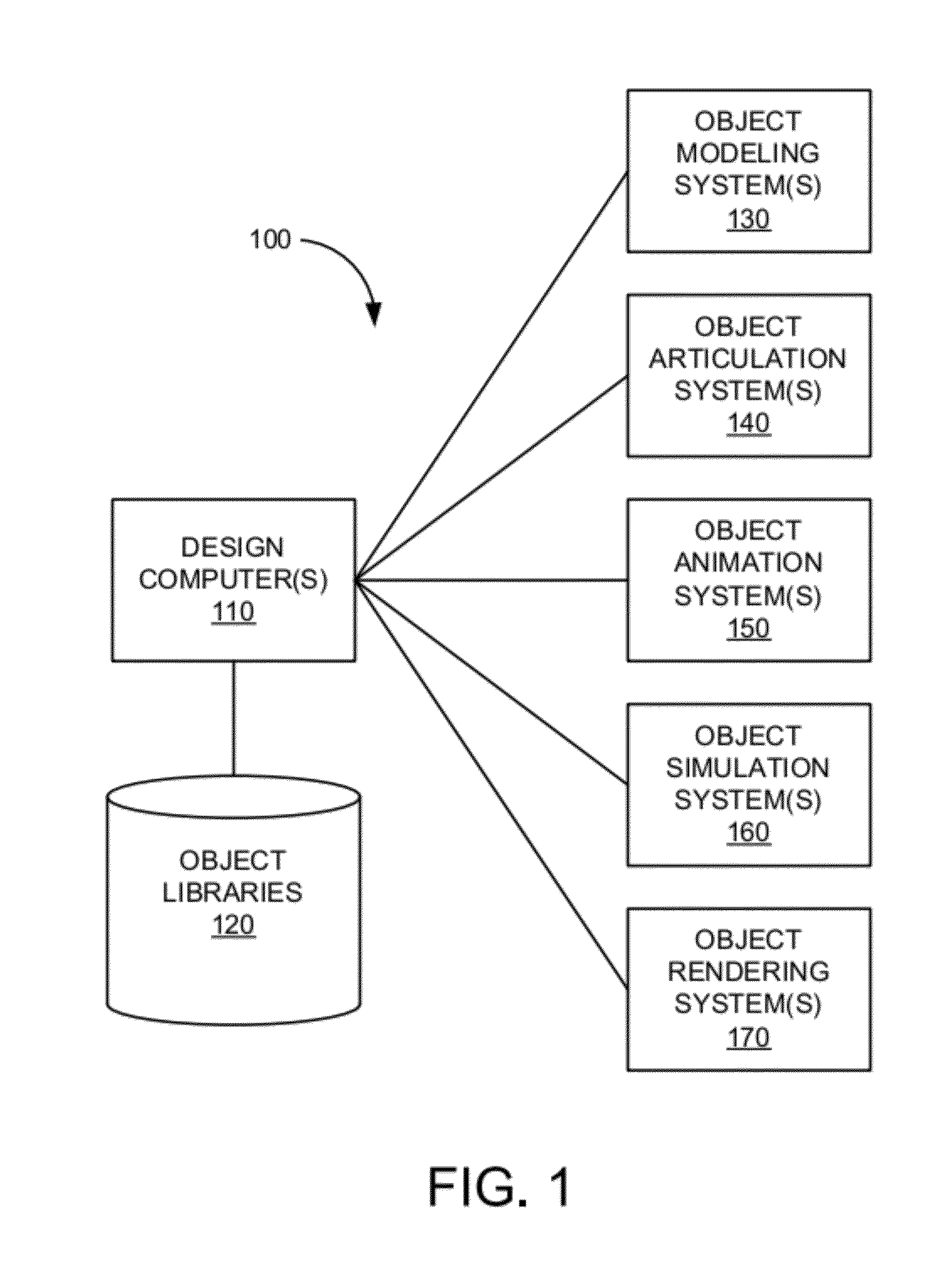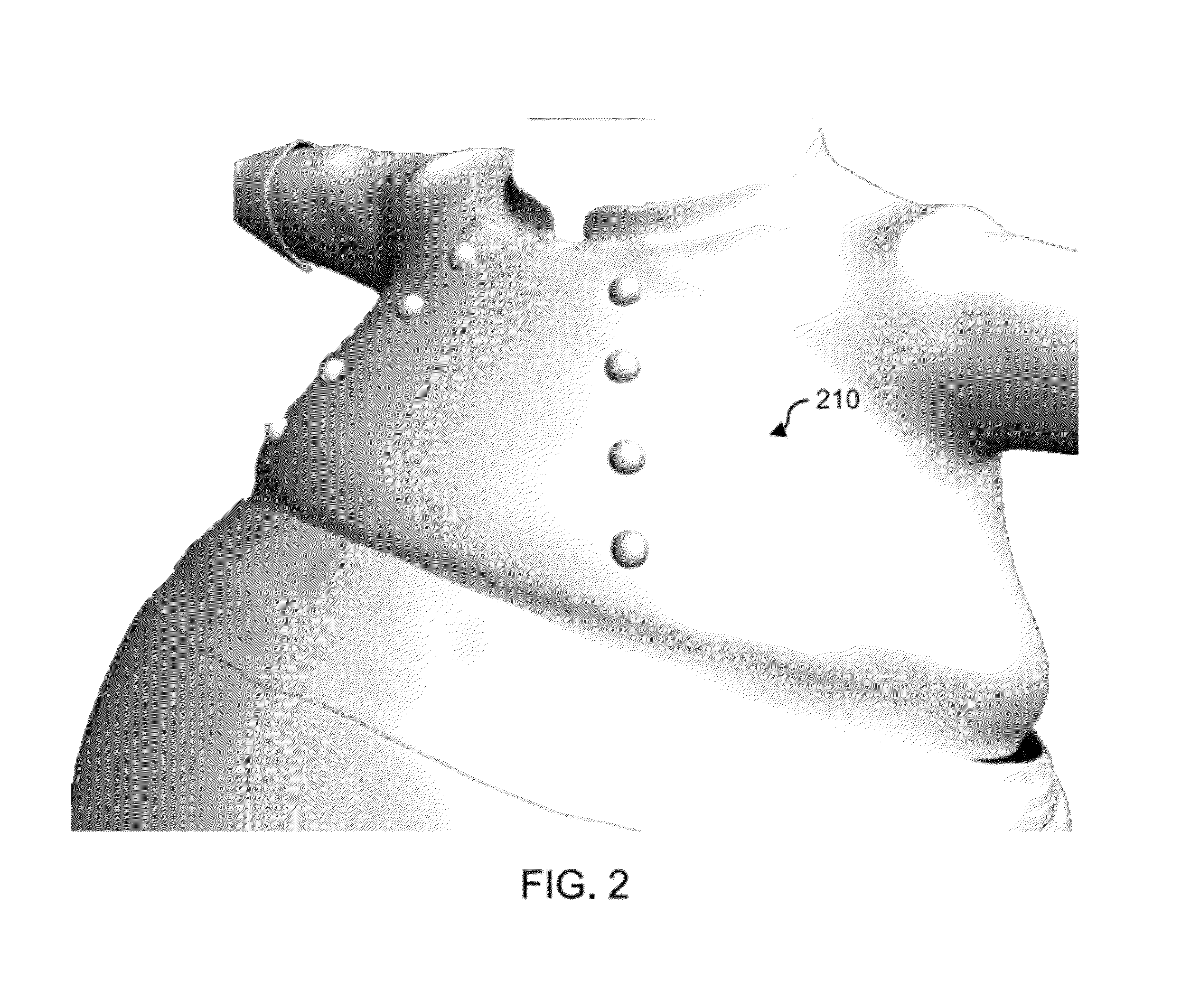Shape preservation of simulated objects in computer animation
a computer animation and simulated object technology, applied in the field of computer generated imagery and computeraided animation, can solve the problems of delicate balance, physical-based numerical methods and techniques used in computer animation, and the complex motion and position of some objects, such as hair, clothing, plants,
- Summary
- Abstract
- Description
- Claims
- Application Information
AI Technical Summary
Benefits of technology
Problems solved by technology
Method used
Image
Examples
Embodiment Construction
[0058]This disclosure relates to computer-generated imagery (CGI) and computer-aided animation. More specifically, this disclosure relates to techniques for preserving the shape of simulated and dynamic objects for use in CGI and computer-aided animation.
[0059]In various embodiments, simulated objects are elements of a computer animation display. The computer animation display may include simulated objects (e.g., secondary or dynamic object) such as cloth, garments and clothing, hair, and fur. The computer animation display may further include reference objects (e.g., kinematic, non-simulated objects, or other simulated objects), such as characters and / or collision objects.
[0060]Typically simulated objects are modeled, described, or represented as a collection of particles, connected to each other in some manner. In one example, a topological mesh is used in the case of clothing. In another example, a collection of strands or linear objects are used to describe hair or fur. In some ...
PUM
 Login to View More
Login to View More Abstract
Description
Claims
Application Information
 Login to View More
Login to View More - R&D
- Intellectual Property
- Life Sciences
- Materials
- Tech Scout
- Unparalleled Data Quality
- Higher Quality Content
- 60% Fewer Hallucinations
Browse by: Latest US Patents, China's latest patents, Technical Efficacy Thesaurus, Application Domain, Technology Topic, Popular Technical Reports.
© 2025 PatSnap. All rights reserved.Legal|Privacy policy|Modern Slavery Act Transparency Statement|Sitemap|About US| Contact US: help@patsnap.com



